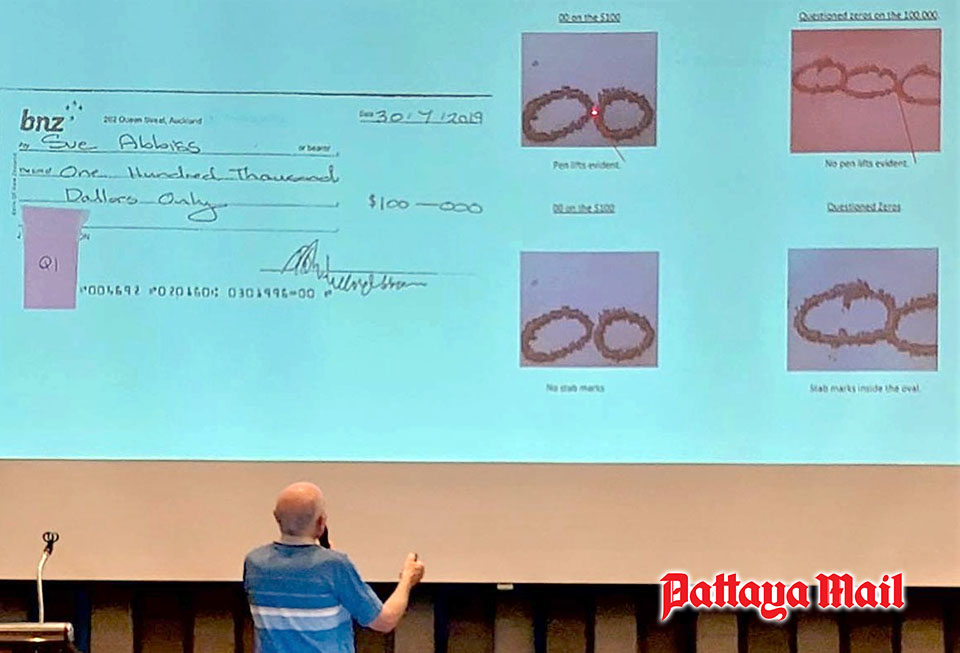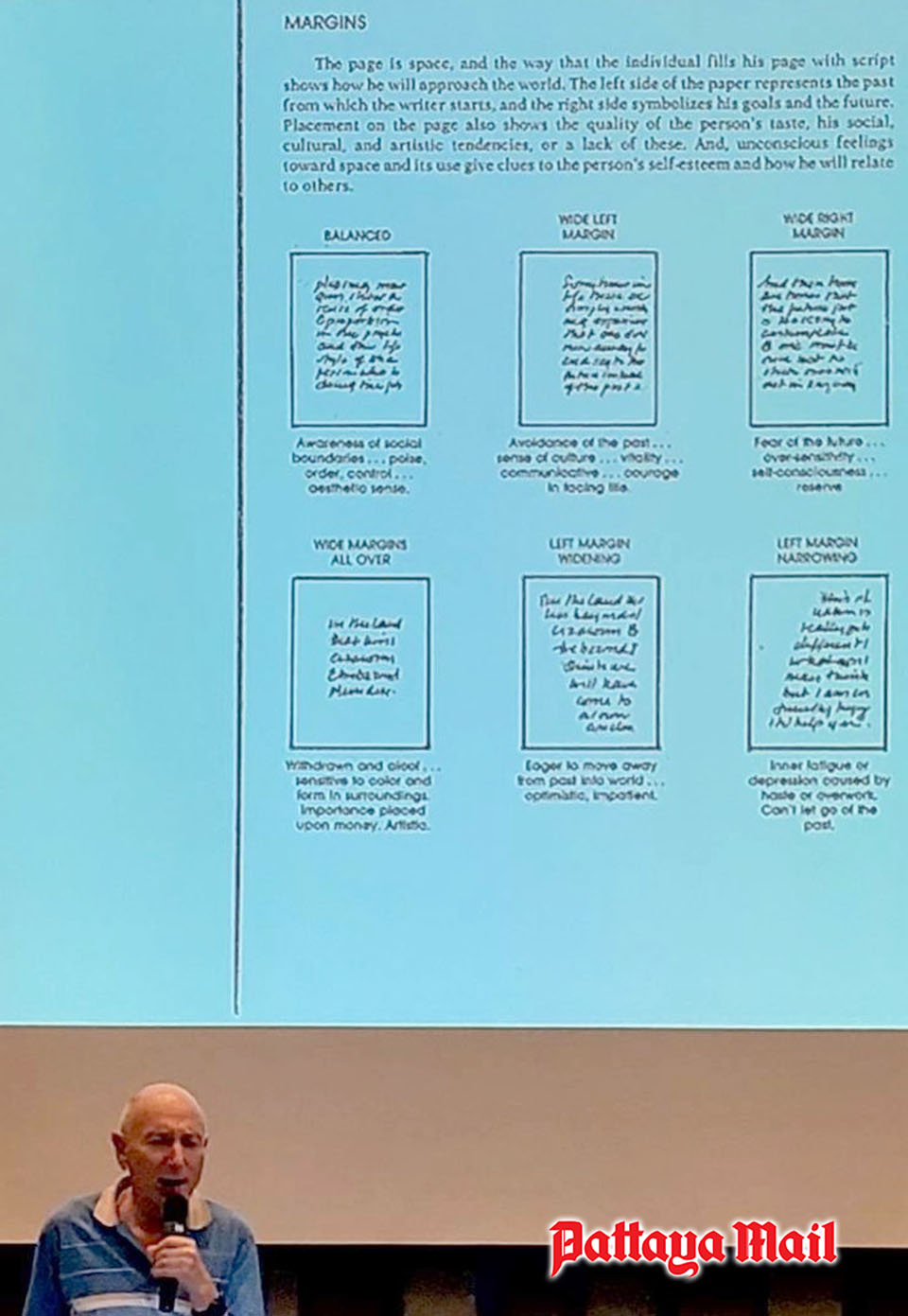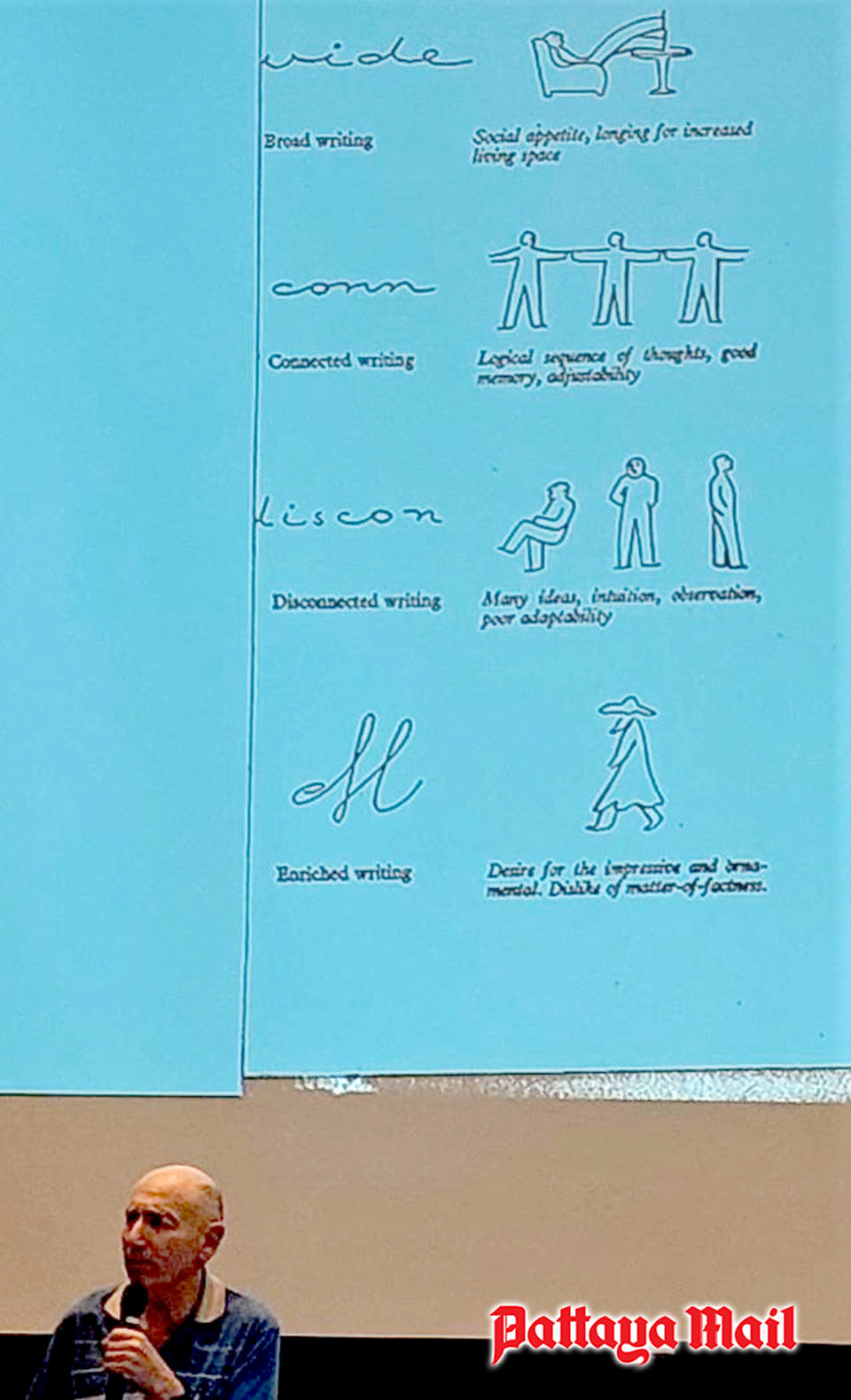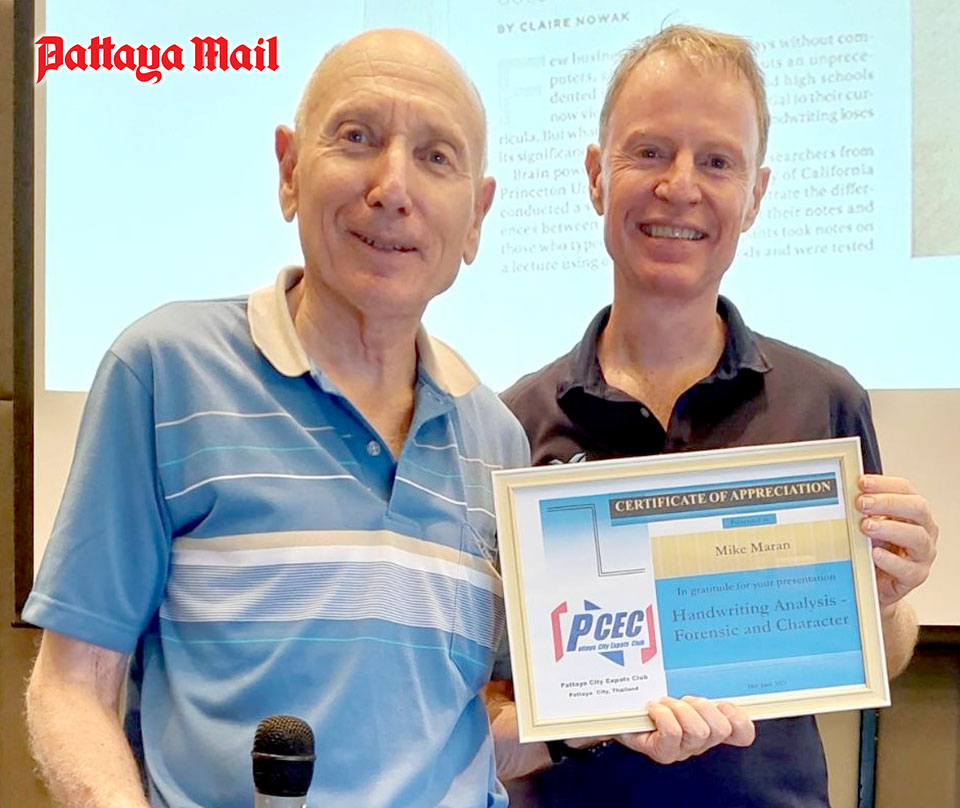
The Pattaya City Expats Club (PCEC) speaker at their June 14 meeting spoke about handwriting, what it reveals about your personality, and techniques used by forensic document examiners. Mike Maran is one of only two private forensic document examiners in New Zealand. Additionally, his studies in graphology allow him to infer a person’s character traits from their handwriting.
Mike has a Diploma in Advanced Studies in contemporary Graphology (2006), a certificate of completion in Questioned Handwriting and Document Examination (2012), and a Certificate of Proficiency in Signature Examination (2015), issued by the International Association of Document Examiners. In 2016 he added a Certificate of Forensic Document Examination. He is a professional member of both the Scientific Association of Forensic Examiners (USA) and the International Association of Document Examiners.
His talk began with his description of graphology and how certain writing characteristics can offer clues as to the personality of the writer. This was followed with an explanation of what forensic document examination entails. Mike noted that there are some common factors applicable to both types of examination.
The application of graphology unlocks the mystery of human personalities and is often applied to employment recruitment, marriage compatibility, health warnings, and forgeries. But it cannot predict the future, reveal the writer’s age /sex/nationality, or whether the writer is right or left-handed. Further, it is not 100%, but should be 70 to 80% accurate. Additionally, a person’s signature needs to be analyzed separately from that of their general writing. Before proceeding with his talk, he asked each member of the audience to sign their signature on a piece of paper and exchange it with a neighbor. He then mentioned certain traits and asked for a show of hands for those seeing those traits. This was followed by Mike mentioning what those traits signified as to the writer’s personality.

He proceeded with his talk by presenting some slides on the big screen showing writing samples along with comments about the personality traits that sample revealed. Mike explained how the characteristics of the writing style, including placement of borders, line spacing, crossing of the “t” or dotting of the “I”, and legibility reveal personality traits of the writer. He then showed several slides depicting various handwriting samples with a description of the character traits that can be inferred about the writer.
Mike followed by noting that most of his work involves forensic document examination. In the case he is involved with, it is usually related to the questioned document being done either for financial gain or malicious intent. Although litigation may be involved, only about 10% of these cases will go to court and require he provide testimony. Further, in expressing his opinion, he does not state that the signature or writing is false, but rather to say it is either “highly probable”, “probable”, or “inconclusive” as to not being that of the signer/writer.
In order to examine a document and form a conclusion, Mike said he needs to have samples “known” to be that of the purported writer to compare with the writing/signature on the questioned document. Further, it is important to examine the original of the questioned document rather than a copy as the document itself can reveal additional discrepancies allowing him to better form a conclusion. Often this is done by viewing the writing/signature using a microscope.

Mike then showed slides of questioned documents compared to known documents. In one example, the signatures appeared to be identical. Mike said in that case, they in fact were identical which is what made the document suspect as having been doctored with a copy of the person’s signature from another document. This is because no one ever signs their signature exactly the same each time, there will always be some differences. To view a video of Mike’s presentation, visit the PCEC’s YouTube channel at: https://www.youtube.com/watch?v=NXonCQzdwpY&t=155s.
After the presentations, MC Ren Lexander called on Bryan Maxie to conduct the Open Forum where the audience can ask questions or make comments about expat living in Thailand. To learn more about the PCEC and their activities, visit www.pcec.club.







